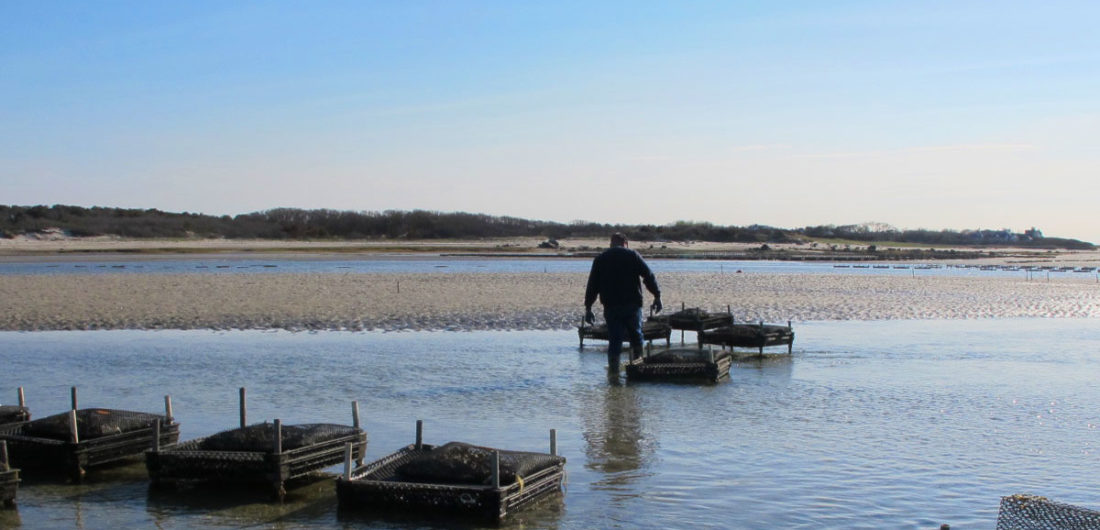In recent years, the word “farmed” has been equated with “unflattering” in the seafood industry, as consumers struggle to determine the best choices for their tables. Farm-raised fish are pumped full of antibiotics and other chemicals, the headlines blare. Farmed fish are fed ground fishmeal, which further depletes the ocean’s seafood stocks. Parasites and diseases run rampant at densely packed fish farms. These charges are certainly true of some fish (see this National Geographic article on farmed salmon and sea lice), however there is one ringing counterexample to the argument that farmed seafood is always bad: oysters. So, what makes cultured oysters so much more environmentally friendly and are they truly better than their wild cousins?
There are some major distinctions between the aquaculture of fish versus raising oysters. Unlike fish, oysters don’t need to be fed, and thus do not further deplete wild seafood stocks. Instead, oysters act like a sponge, absorbing and filtering minerals and nutrients from the water around them, no additional help needed. Oysters do not generate waste or pollute the water, even in densely packed beds. On the contrary, they remove nitrogen from the water and improve water clarity, which benefits other aquatic plants and wildlife. In general, they only grow and flourish in clean conditions, so farmers don’t use added chemicals in production and they have strong incentives to protect the regional watershed.
Wild oysters provide all these benefits too, but pollution of coastal waters means you must be very cautious of the oyster’s harvest location. Some wild oysters are harvested through dredging, which destroys seafloor habitats. Overall, it’s better to leave wild oysters to reproduce and build up oyster beds along our coasts, rather than depleting those populations. For these reasons, Monterey Bay Aquarium’s Seafood Watch rates farmed oysters “green,” but wild oysters “yellow.”
More importantly for discerning palates, some might say farmed oysters taste better. Wild oysters that grow to adult size have certainly beat the odds (only about one in a million eggs survive), however they have generally led a life of hardship, struggling to reach algae and nutrients from the muddy seafloor bottom. Farmed oysters, on the other hand, have been stuffed with a steady stream of food since birth, bask in temperature controlled conditions without large fluctuations, and have doting farmers who ensure that they grow strong, beautiful shells. They are bred to grow quickly and are harvested when they are at their peak flavor.
No wonder 95% of the oysters we eat are farm-raised; they’re both more environmentally sustainable and tastier to boot!
At Element Seafood, we carry farm-raised oysters as a general rule, for the philosophical reasons outlined above. The only exception is the Belon oyster, which is found in wild beds in the Damariscotta River in Maine, one of the only established and self-sustaining oyster populations in the world. However, even these oysters are not native to the area; they were originally planted in the 1950s by scientists who were interest in culturing this European species on the other side of the pond. Some of the oysters were accidentally released into the wild, and they have since settled and are thriving in Maine.
So, the next time someone asks you whether you prefer farmed or wild seafood, you can proudly announce, “I’ll take farmed oysters any day!”
